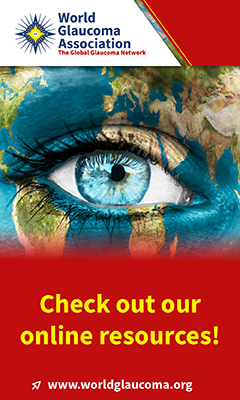advertisement

Abstract #9082 Published in IGR 5-2
Evaluation of heredity as a determinant of retinal nerve fiber layer thickness as measured by optical coherence tomography
Hougaard JL ; Kessel L; Sander B; Kyvik KO; Sorensen TI; Larsen MInvestigative Ophthalmology and Visual Science 2003; 44: 3011-3016
PURPOSE: To study to what extent genetic factors determine the retinal nerve fiber layer thickness (RNFLT) in healthy subjects. METHODS: In vivo peripapillary optical coherence tomography (OCT), clinical examination, lens fluorescence, and fundus photography were performed on both eyes of 25 monozygotic and 25 dizygotic same-sex pairs of twins. The cross-sectional study included twins aged from 20-45 years recruited from a population-based register. Only healthy eyes were included. MAIN OUTCOME VARIABLES: peripapillary OCT RNFLT, reproducibility, and heritability (the proportion of the total observed variance statistically attributable to genetic factors). RESULTS: The within-pair difference in RNFLT was 4.6% (0.7-15.2%; median (range)) in monozygotic versus 7.3% (0.2-20%) in dizygotic twins (p = 0.032, Mann-Whitney test). The RNFLT heritability was 66%. The RNFLT measurement was found to decrease 3.8 μm per decade (p = 0.003). The RNFLT heritability increased to 82%, when corrected for the effect of age and excluding within-pair refractive differences of 2 D or more. The signal-to-noise ratio correlated with lens transmittance (r = 0.25, p = 0.012), age (r = -0.29, p = 0.004), and RNFLT (r = 0.43, p < 0.001). Intravisit RNFLT reproducibility was 4.2%. CONCLUSIONS: Peripapillary RNFLT in healthy adults, as measured by OCT, was determined predominantly by genetic factors in this study population. Theoretically, these factors may involve variations in the number of ganglion cells and nerve fiber formations early in life and/or in the rate at which these structures are subsequently lost.
Dr. J.L. Hougaard, Department of Ophthalmology, Herlev Hospital, University of Copenhagen, Herlev, Denmark. jlh@dadlnet.dk
Classification:
2.13 Retina and retinal nerve fibre layer (Part of: 2 Anatomical structures in glaucoma)
6.9.2 Optical coherence tomography (Part of: 6 Clinical examination methods > 6.9 Computerized image analysis)
